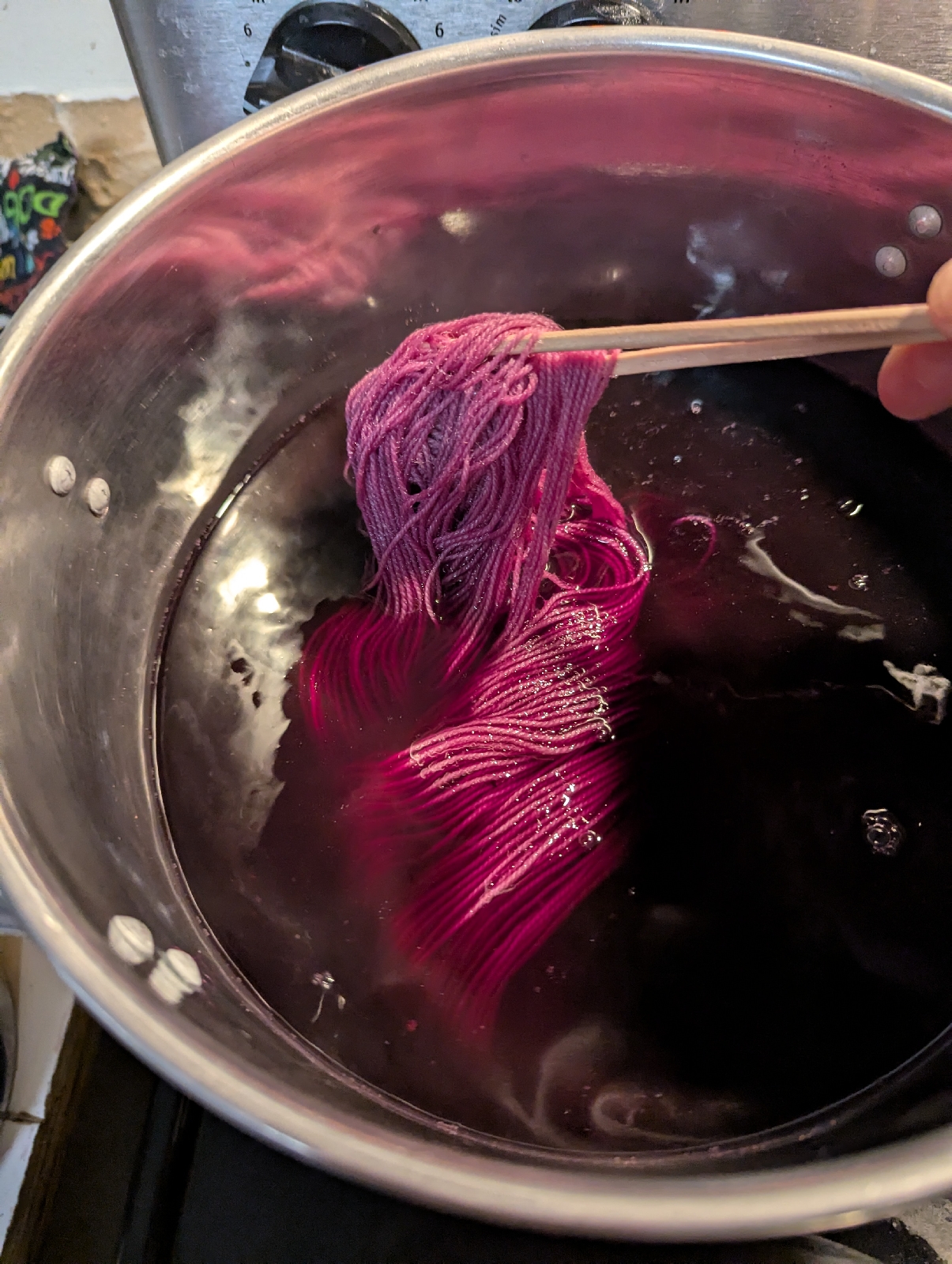I'm going to make the trek down from Mid Maine to NJ for a dear friend's elevation. I've never been down to Settmour Swamp and unlikely to go often. But the A&S theme for the event struck me:
"From the New World Comes"
How have the materials available from the new world inspired you and what did you create with it?


All the instructions I read looked like they were aiming for a brilliant red. I was looking for purple. I'm always looking for purple 😁 And finally, as with my lichen dye, the magic ingredient seemed to be iron. Most of the sources also agreed that using a mordant would give a longer lasting and more vibrant saturation. Given that chemistry plays so heavily into this process, I worked really hard to control the variables in these 3 vats as best I could.

I combined the crushed powder with distilled water and simmered for 15 minutes, cooled and strained through a paper coffee filter. The internet said I should do this 2-3 times until the water stopped having pigment... I repeated the process 6 times and was still getting a rich dye stock. I stopped and have let the powder dry to use for another extraction in the future (and as part of my display). I also took 600 grams of Peruvian Highland wool and simmered it with a couple tablespoons of alum to mordant. I really love that most of this is food safe. Carmine has been used to color our foods for centuries and alum is often used to add crunch to pickles. This is where I stopped for the night.
Fast forward to the end of a crazy day of mundane work and finally picking up my car after a ton of work (still need to get it aligned, but that's happening tomorrow). My darling spouse wanted to have a solid block of time crafting for his own, so we ate dinner quickly and disappeared to our various spaces: him to his wood shop, me to the kitchen.
For this project, I planned 3 dye vats: 1) control: 2 cups of dye stock, 200 grams of mordanted yarn, distilled water; 2) variable A: 2 cups dye stock, 200 grams of mordanted yarn, 1/2 tsp of iron, distilled water; variable B: 2 cups dye stock, 200 grams of mordanted yarn, my well water (exact mineral content unknown).
My goal here was really to see what the metals do to the color. I am relieved to say that I was right, I have 3 distinct different colors. It is still simmering on the heat and I will continue to cook it for a full 90 minutes at a low simmer so as not to damage the fibers. I will let it cool over night and rinse with synthropol. Then it's time to hang to dry! I can't wait to see what happens after the rinse. I'm loving the colors in the dyepots, but fear that as with most natural dye I will lose a lot in the rinse. Pictures to follow as things dry!
Sources:
https://www.dharmatrading.com/dyes/cochineal.html?lnav=dyes.html
https://www.britannica.com/technology/cochineal
https://myramadecolor.com/2020/12/06/how-to-mordant-alum/
https://botanicalcolors.com/cochineal-insect-instructions/?srsltid=AfmBOoqg_q3VfGd-mCC7GPw56uM00IT_W4plmTQXK3oFXn_l8FibhNui
Walker, EJW, 1993, Prehistoric Textiles: The Development of Cloth in the Neolithic and Bronze Ages with Special Reference to the Aegean, p 231







Comments
Post a Comment